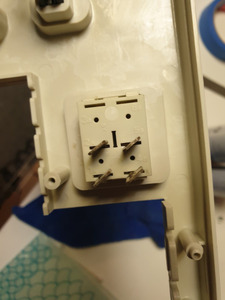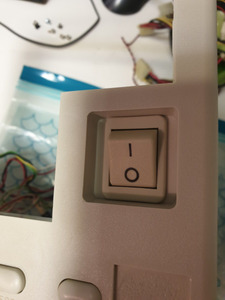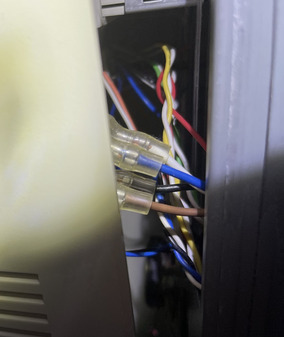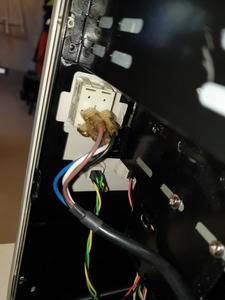First post, by claesbas
i have been working on a 166mhz mmx computer. Its in a nice old 1995 era mid tower (one of the old ones with turbo btn and a digital number display). Been retro brighting the plastic and painted the metal very carefully. Will post images when done.
I took lots of images while disassembling it but I must have forgotten the Power Button cables as I cannot find these. Its one of these old power buttons (see images)
I got a black, white, blue and brown cable from the AT power supply (it was connected before I disassembled everything) - Which color goes where on the
1A, 2A, 4B and 5b connectors?




